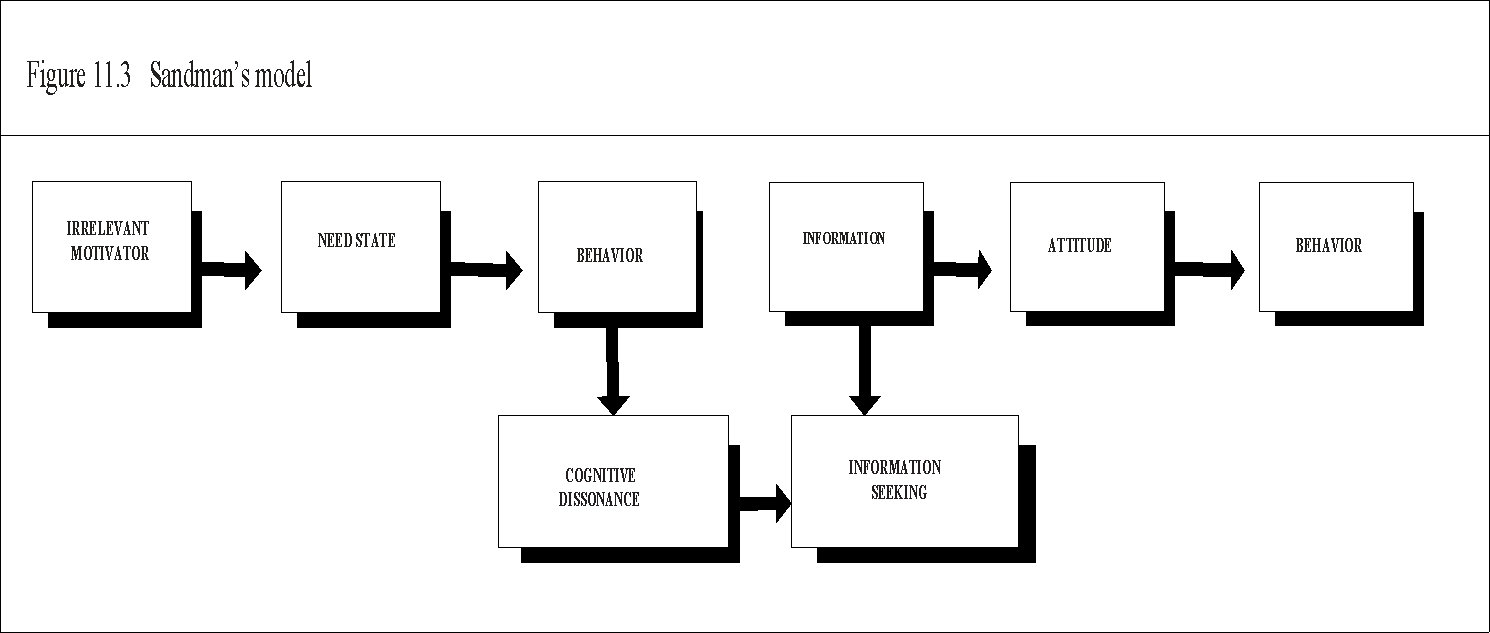Media Campaigns
The media, that collection of opportunities for communicating with the masses, carries tremendous power. In the United States, we have seen television episodes plant seeds of change in a nation’s conscience when Maude (a popular character on aprime time show in the 1970s by that name) chose to have an abortion or when Fonzie, a streetsmart teenager, got a library card. The American public began to debate the merits of legal abortions and nearly one half million youths rushed to public libraries to get their cards.
We have also seen televised political debates sway public opinion after leading contenders falter. And we have seen powerful advertisements sell cars, toothpaste, and peanut butter. It is no wonder that environmental communicators seek to harness this powerful force aimed at informing and chang-ing public opinion.
But often this power is quite difficult to use effectively. In some cultures, people are bombarded with over 3,000 advertising messages per day. What would make an environmental message stand out among that competition? Furthermore, environmental behavior is often a series of complex actions and opportunities. Is it realistic to expect ashort message to make a significant change? Publicly broadcast communications reach the masses, but since the public usually holds a wide variety of beliefs and knowledge about any one environmental topic, it is difficult to reach the right group with relevant information. How can a message be crafted to communicate the right points to the proper audience?
This chapter will explore designing communications campaigns.
What Is A Communicationscampaign?
Communications campaigns are varied, multifaceted, highly planned, and strategically assembled media symphonies designed to increase awareness, inform, or change behavior in target audiences. There are many forms of public media:
Paid and Public Service Advertisements
For instance, GreenCOM developed a series of six 30-second television and five radio spots on water conservation for Egyptian farmers. The spots were launched with a well-attended news conference where Ministry of Public Works and Water Resources staff expressed their pleasure with the campaign. At the same time, field engineers in the Ministry were given packets of information to support their discussions with farmers, and a press kit was distributed to reporters. Hats, posters, and a calendar for school children helped create a festive atmosphere that kept the serious subject of water conservation alive.
Making News
Many environmental organizations make effective use of “media events” to encourage news reporters to cover their stories. Greenpeace, for example, has climbed smokestacks to hang signs that draw attention to air pollution. Tired of bureaucratic delays, another group wrapped the Toronto City Hall with red tape and had reporters on hand when the first employees came to work. Less confrontational events might include a press conference, a special lecture, a government hearing, the first showing of an important documentary, or a major announcement of a scientific finding. By themselves, these events can begin to increase awareness. Launched in conjunction with brochures, programs, and other activities, they can be part of a campaign.
Entertainment and Celebrities
The entertainment industry offers highly effective opportunities. GreenCOM worked with a local television producer in the Philippines to adapt a series of daytime drama episodes where popular characters discussed issues. Many advocacy groups, from animal rights to ocean protection, use prominent actors as spokespersons for their causes in newspaper articles, paid advertising, entertainment, and public service announcements. Actress Meryl Streep’s concern about pesticides on apples was orchestrated by the Natural Resources Defense Council in a campaign called “Mothers and Others” that focused attention on pesticide residues onfood and the inane but widely shown “Naked Gun 33 1/3,” a movie about government policies for alternative energy sources, was created with support from wellrespected environmental policy groups.
A communications campaign may involve a variety of these strategies, or only one. The design of a campaign depends upon the financial resources available to create, field test, and implement the campaign, the goal of the campaign, and to a certain extent, the existing awareness and controversy associated with the issue. Some of the many possibilities for communication channels are listed in Table 11.1).
Developing A Campaign
When a decision has been made to use a media campaign to advance an environmental cause, it may seem natural for those closest to the situation to define the main message of the campaign. “One less car,” or “Don’t litter” may come to mind. This is a temptation that must be overcome. Premature efforts to identify the message may lead to missing the needs of the audience. Experts on the issue often know little about the audience. It is crucial to know the audience—to know what they already know about the issue, what they associate it with, how they feel about it in order to design an effec- tive message. In Egypt for example, officials of the Ministry of Public Works and Water Resource told GreenCOM that they know what messages would get farmers to conserve water. But in a pretest of only 40 people, 39 did not even understand the ministry’s message—let alone find it persuasive.
As with an educational effort or a training program (Chapter 10), the development of a communications campaign should follow a basic process that involves carefully developing a realistic goal, assessing the audience, developing a strategy that uses appropriate media, and, finally, crafting a message that pre-tests successfully with the audience (Chapters 6–8). All of these elements: the goal, the audience, the media, the strategy, and the message, interact with each other to create a successful campaign.
After the campaign is launched, it can be evaluated in several ways: by recording the exposure (number of ads in number of magazines with a circulation of so many people); by surveying people asking them to recall the message; and by observing changes in behavior or the environment that could be attributed, in part, to the campaign (see Chapter 9).
To select the most effective behaviors, it is necessary to explore what people already know, believe, and care about
Think of a communications campaign as having four stages (see Box 11.1). In the first stage formative research helps define the goals and the target audiences, as well as the “media diets” of the audiences. In the second stage, the audiences’ the campaign strategy is developed, messages are developed and pre-tested. Third, the campaign is implemented. Finally, the results are evaluated and used to further refine the strategy.
Stage 1: Goal, Audience and Medium
In the first stage, formative research helps define which behaviors the campaign will attempt to change to achieve its broad goals. To select the most effective behaviors it is necessary to explore what people already know, believe, and care about (see Chapter 6). You must understand the difference between those who already perform the desired behavior (“doers”) and those who do not (“non-doers”). Finally, formative research for acommunications campaign should explore the media “diet” of our audience. Are they literate? Do they listen to radio? If so, which station(s) and at what time(s)? Do they read any publications regularly? Do they have access to TV, Internet, or other media and do they use it regularly? This information, along with your budget, will help define the strategy and choice of media.
With the goal in mind and information about the “media diet” of the audience in hand, strategic decisions can be made about selecting markets, media, sequence, frequency, and times. These factors form the essence of the campaign. Critical information about funding and how to obtain access to a variety of media opportunities will be needed at this time. Is the effort blessed with a charismatic spokesperson? Is free radio time available? How many newspapers cover the target region and is it possible to advertise in them? Does the audience travel along a particular route frequently, making road signs an option? How often should the message be repeated to achieve your goal? Is it necessary for the campaign to generate more resources to enable you to achieve the goal? BOX 11.1 Formative Research Changes Campaign Focus in GreenCOM’s work in Egypt, the Ministry expected us to create a campaign that discussed how farmers could save water. Initial research made clear, however, that some farm-ers already used conservation techniques, andthat others did not believe water needed to be conserved. A carefully crafted initial campaign began by explaining the treaty that limits the amount of water that is available and continued by acknowledging the fine efforts that some farmers employ. A later campaign was more specific and directed toward additional conservation strategies. In this case, formative research indicated that people would not respond well to being told what to do, but first needed to hear support for the positive behaviors already in place.
Stage 2: Message
Finally, the main message of the campaign can becrafted, along with the design of all the media products comic books, posters, story booklets, radio spots, billboards, etc. A team of creative people should work with the content experts and rely upon the results of the formative research for guidance. The process often requires several revisions before everyone on the team is pleased with the type of illustrations, the flow of the storyline, the wording, the gender implications of the message, and the ultimate action.
The experts are, of course, not the audience, so every element of the campaign should be pretested with the intended audience. This can be done through focus groups, interviews, classrooms, meetings, and other existing networks. But pretesting must be done. There are many examples of media products that were distributed broadly before the organizers realized they were not communicating the desired message. For example, Chevrolet neglected to pre-test the name of its compact car in Latin America, only to learn after public embarrassment that Nova, or “no va” means “no go” in Spanish. Translation errors are frequent, even for major advertising firms. Make sure local people, not just experts, are in the pre-test audience. Pre-testing is one of the most important ways to prevent spending money and effort in the wrong direction.
Stage 3: Implementing The Campaign
Implementing a campaign is never easy, but if stages one and two have been done well, implementation should go smoothly.
Stage 4: Monitoring and Evaluation
Evaluation should begin during implementation and be used to make mid-course corrections (see Chapter 9).
Theoretical Models Underlying Campaign Strategies
For centuries, educators have assumed that if they provide students with information, that information will lead to new attitudes. They have also assumed that these new attitudes will then lead to new behavior (see Figure 11.1). However, 20th century research shows, what many parents already knew that the linkages between informa- tion and attitudes and, even more importantly, between attitudes and behavior are not strong.
This age-old educator’s model is not really very effective at changing behaviors. The biggest gap in human nature is between what we know and what we do!
When the advertising industry was born in the early 1900s, if found the educator’s model useless in selling products, especially in getting consumers to select their product over similar products. They created a different, effective model that spawned amulti-billion dollar industry (see Figure 11.2).
The advertiser’s model clearly works. However it contains an element that can be unappealing to environmental communicators. Ads usually start with an “attention grabber” that we may think of as an “irrelevant motivator.” (The advertising industry does not use this term.) An irrelevant motivator is something that motivates the consumer to buy the product, but it is not related to the product. This motivator is connected to a“need state” of the potential customer. Some universal human need states are for status, sexual attractiveness, or being a good parent. The advertiser suggests that buying this product (changing your behavior) will fill this need. The examples below demonstrate this model:
- Automobile manufacturers try to connect the purchase of a specific automobile with status, power, or attractiveness to members of the opposite sex.
- Toothpaste manufacturers and breath mint makers suggest that the person of our dreams will suddenly show interest in us if we use their product.
- Cigarette producers try to convince us that their brand will make us “cool,” manly, and worldly.
As powerful as these appeals to human needs states are, a single exposure to an advertisement rarely has much impact on the consumer. Even after they buy the product, consumers may begin to question the link between the product and the need state since in reality of course, there is no link. The new car did not make us rich and powerful. Brushing with Crest or Pepsodent did not get us a date. Lifesavers or Certs did not save our social life. Social researchers call this state “cognitive dissonance.” The consumer is performing a behavior (buying Crest) for a reason that he/she intellectu- ally knows to be untrue (It will help me get a date). This is an uncomfortable state that most humans will seek to resolve so that their actions are in line with their beliefs and knowledge.
Why not just provide the information in the first place? Because the audience wasn’t interested in it then. Now they are.
One way to resolve the situation is to keep listening to the original message for reassurance that you are doing the right thing. Thus advertisers typically repeat their message endlessly not only to attract new customers, but also to reassure current customers. This repetition creates a direct relationship in our minds between the product and the fulfillment of our needs. In fact most advertising is aimed at customers who have already made the decision to buy the product and is intended to reinforce that decision.
An Environmental Communications Model Dr. Peter Sandman, a noted environmental communicator, developed a third model in the 1970s that combines the educational and advertising models (see Figure 11.3). Sandman’s model follows the advertiser’s model except that almost all environmental messages can use a relevant motivator that addresses a need state to get people to perform an initial small behavior. Performing this behavior still induces some cognitive dissonance, as it does in the advertising model. For example, those of us who have circulated petitions know that it is better to ask people to sign quickly and then listen to the good reasons for supporting the cause. Once someone signs his or her name to a statement, he/she starts to question “Should I have done this? How will my name be used? Who is really behind this? Did I read it carefully enough?” Another example: children often nag their parents into doing something such as recycling that they learned about at school. At first the parent responds to please the child, but later will ask “Why am I really doing this? Is it really worthwhile?”.
Here the Sandman model departs from the advertiser’s model. Environmental communicators have something that most advertisers don’t—good reasons to continue the behavior that can replace the initial irrelevant reasons. Rather than endlessly repeating the motivational message, environmental communicators can now switch to the real reasons for the behavior by providing information. Why not just provide the information in the first place? Because the audience wasn’t interested in it then. Now they are. They are interested in finding information that will support their new behavior. In fact, they are seeking it in order to resolve the uncomfortable cognitive dissonance they feel at performing a behavior for a not-very-good reason.
Sandman cites research done at the Ann Arbor, Michigan recycling station (in the days before curbside recycling) to explain how this works. Recyclers had to separate their trash and then drop the recy- clables off at a recycling station in town a considerable investment of time. At the station, Recyclers were interviewed about what made them come and how much they knew about recycling. New Recyclers didn’t know much and were there for basically irrelevant reasons (e.g., their child nagged them to do it, they wanted neighbors to think well of them in this progressive community, they wanted to meet people like themselves). Long-term Recyclers however, could tell interviewers how many trees were saved by a month’s worth of newspapers and how much energy was conserved by recycling glass bottles. They had replaced the irrelevant motivators with relevant reasons to continue the behavior. The Recyclers who did not make this transition to finding good reasons, stopped recycling. The original motivator was not enough to sustain the behavior of recycling. Thus information, delivered at the correct time and in a targeted manner, is crucial to maintaining environmentally friendly behaviors. The best place for Recyclers to get this information would be at the recycling station itself.
This research suggests that creating and maintaining recycling behavior requires two messages to two audiences. The first message contains an irrelevant motivator (or partially relevant) and is aimed at the Ann Arbor population. It might be something like “You meet the nicest people at the Ann Arbor Recycling Station” or show a child reminding a parent, “But Mom, You could recycle that!” The goal of the message is to get people to the recy cling station once.
The second message is designed to reinforce the behavior of people who have made the trip to the recycling station. It contains the reasons why they are doing a good thing and builds on the behavioral commitment.
A national recycling campaign in the United States used Sandman’s model. First, it encouraged people to call a toll-free number. The initial advertisements ended with the tagline, “If you are not recycling, you are throwing it all away,”and an image of a crumpled Earth tossed into a waste bin. The message appeals to Americans’ positive attitudes toward the environment and their ethic about not wasting things. The 200,000 people who called received additional information about why recycling was important, where they could take recyclable materials, how to package them, and how to a start recycling program by finding local markets. The campaign didn’t spend its own resources putting this detailed information out to people who weren’t paying attention. The first ad got their attention (based on an emotional motivator) and convinced them to take a simple action. As a result of that action they were given factual information that would support a longer-term behavior change.
Positive attitudes support long-term behavior (see Figure 11.1). Information alone is not enough to support behavior, but information can lead to a change in attitude that can lead to behavior just as educators have told us it would. But, without a motivator and an initial action to create cognitive dissonance and start the information seeking process, there is nothing to trigger the uptake of the information.
By combining the models of advertisers and educators, environmental communicators can have a bigger impact.
Sumber: Kelas Kyutri, Jumat, 30 November 2012.















 lingkarLSM.com
lingkarLSM.com PENABULU ALLIANCE
PENABULU ALLIANCE KOMUNITAS KEUANGAN LSM
KOMUNITAS KEUANGAN LSM KYUTRI KELAS BERBAGI
KYUTRI KELAS BERBAGI RUMAH KEMUNING
RUMAH KEMUNING